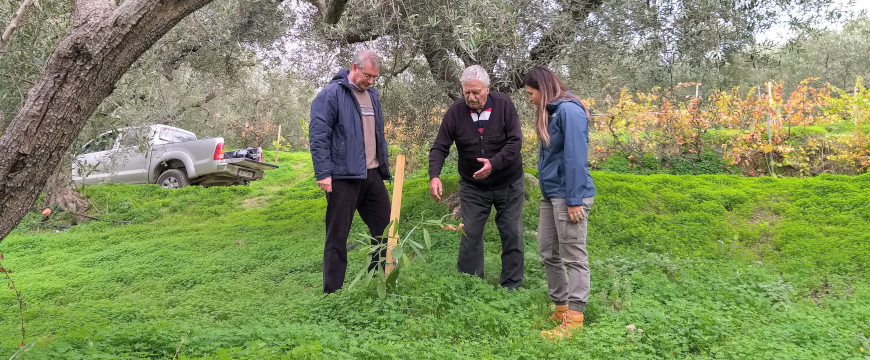(Photo essay) On a cloudy November day, we headed west of Chania, Crete to explore olive-avocado intercropping and witness the production of olive oil in a mill full of new inventions. Setting out to film a short video about innovative practices and machinery, we encountered the sights, sounds, colors, aromas, and flavors of the Greek olive oil world.
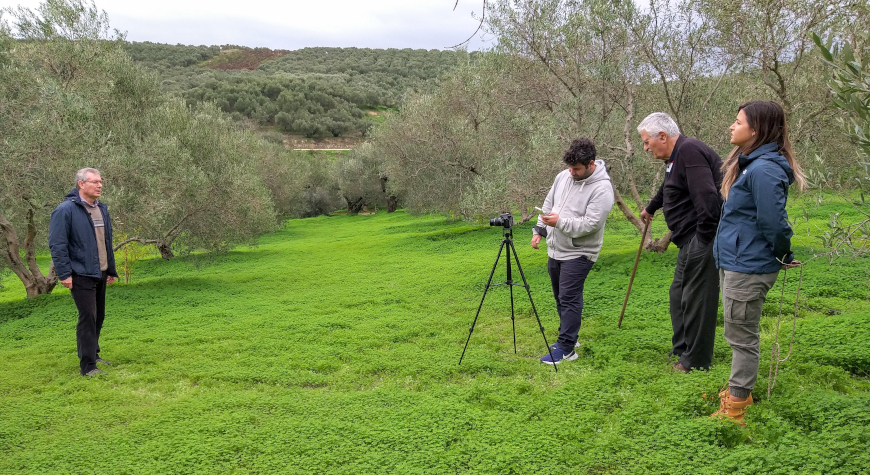
Panos Kalaitzis drove me and Kostas Blazakis from the Mediterranean Agronomic Institute of Chania toward the famous olive growing region of Kolymbari. We then turned inland, following narrow, winding country roads bordered by olive groves. Large green nets were strewn beneath many of the trees to catch the olives that laborers were knocking down with mechanized harvesting devices whose sizable “teeth” rotate at the end of long poles. Pickup trucks overflowing with bags full of olives progressed toward village mills.
At one of these mills, we joined Eleftheria Mamidaki and Spiros Lionakis, who invited us into his roomy gray pickup truck for a tour of his intercropped olive groves. Jolting over rugged dirt tracks, up and down hills, we visited groves where olives were interspersed with small trees that will bear many types of fruit: figs, pears, mangos, guava, pomegranates, and avocados. We stopped on a hillside where the orchard was carpeted with bright green oxalis leaves (Bermuda buttercup, not yet in bloom).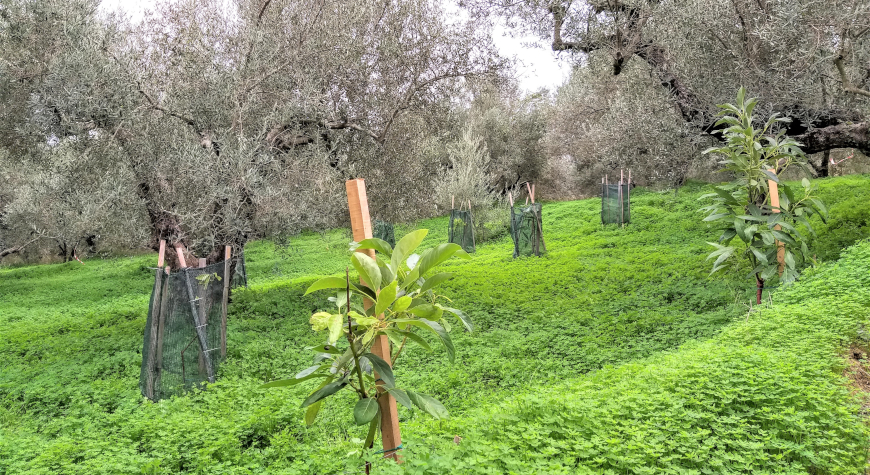
We waded through the damp grass and sorrel, passing some olive trees unburdened of their fruit and others weighed down with olives. There, emeritus professor of arboriculture Spiros Lionakis showed us his young avocado trees, initially surrounded by dark green nets supported by stakes for protection. For our video, he mentioned a few of the benefits of planting avocado trees between widely-spaced olive trees: this can significantly increase farmers’ income, help prevent erosion, and improve biodiversity, thus making it easier for the natural enemies of pests to thrive, so less pesticide is likely to be needed.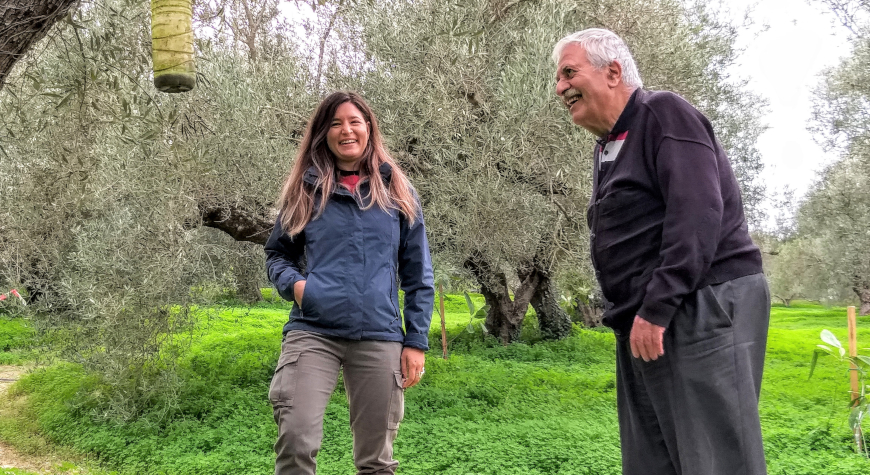
Anoskeli Winery and Olive Mill manager Eleftheria Mamidaki explained that she was glad to learn from the professor about such an environmentally friendly, manageable way to diversify her company’s production and make their groves more profitable. Her family had owned olive groves for generations, and her father had more recently planted some avocado trees on another plot. However, it was only through the LIVINGAGRO project that she learned that these two types of trees could be successfully grown together (intercropped). Following the online LIVINGAGRO B2B event in July where Lionakis discussed this, Mamidaki has been collaborating with him to plan for intercropping on family and company land.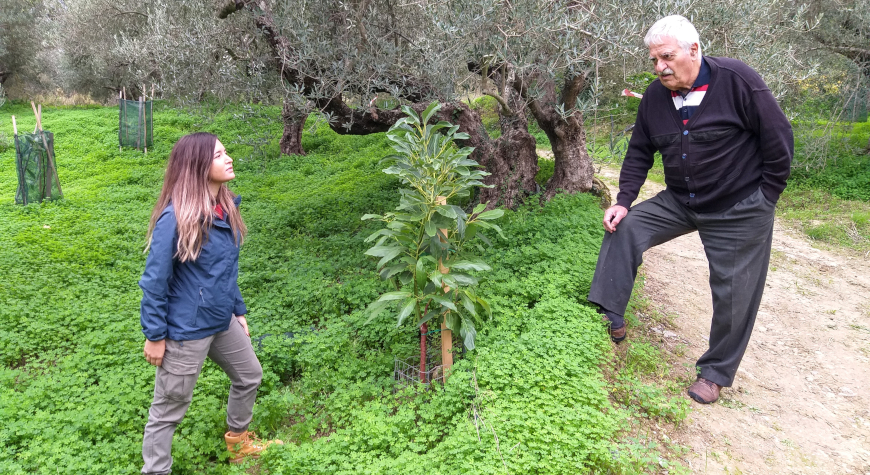
Concluding our video’s brief consideration of intercropping, we set off in search of an unusual olive mill. Winding along inland from Maleme, we enjoyed more vistas of olive-covered hills and valleys, with occasional views of the sea mirroring the gray sky in the distance. At the end of a gravel road that meandered through olive groves, giant crates of Tsounati and Koroneiki olives welcomed us to Michalis Marakas’s mill of organic olive oil experimentation. Here Eftychis Androulakis experiments with alterations to machinery, inventing new ways to make his Pamako extra virgin olive oil both more flavorful and fuller of health benefits.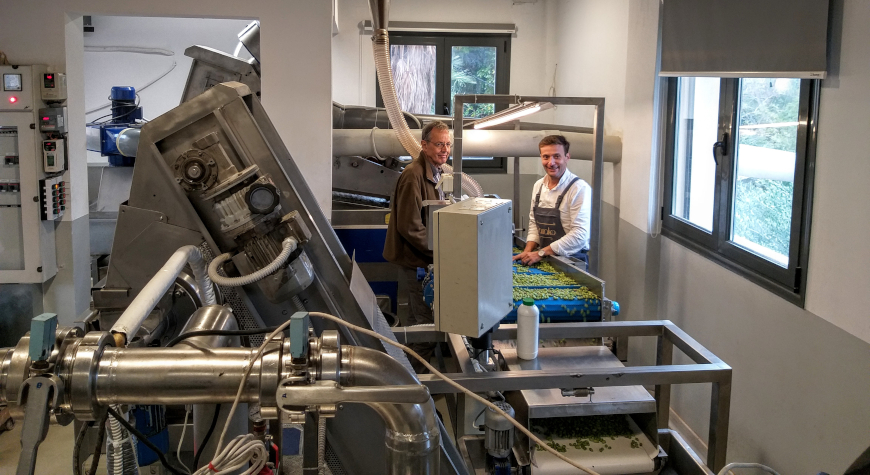
This surprisingly compact private mill is full of ingeniously adapted machinery that has been carefully fit into the limited space. For example, as Androulakis explains, his new washing and drying system for olives makes it possible to lower the temperature of harvested olives by 2 to 3 degrees Celsius. The plastic-free, rubber-free stainless steel olive depitter/crusher he adapted removes most of the olive peel and keeps the olive paste’s temperature unusually cool. Both innovations tend to yield higher quality, healthier, more aromatic olive oil that can bring producers a better price.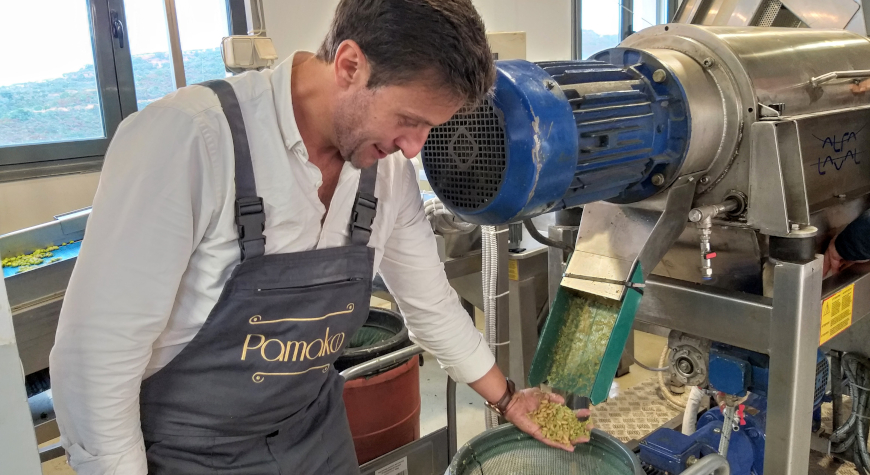
Greek speakers interested in learning more about these and other innovations related to the olive and livestock sectors are invited to attend a hybrid B2B event on December 16-17 that will bring together innovators aiming to help stakeholders overcome various challenges. Catalogues of the innovations presented at a similar event in July (and the contact information of innovators) are available on the website of the ENI CBC Med LIVINGAGRO project that is making these events (and our video) possible (in Greek and also in English). Updated catalogues will be published soon.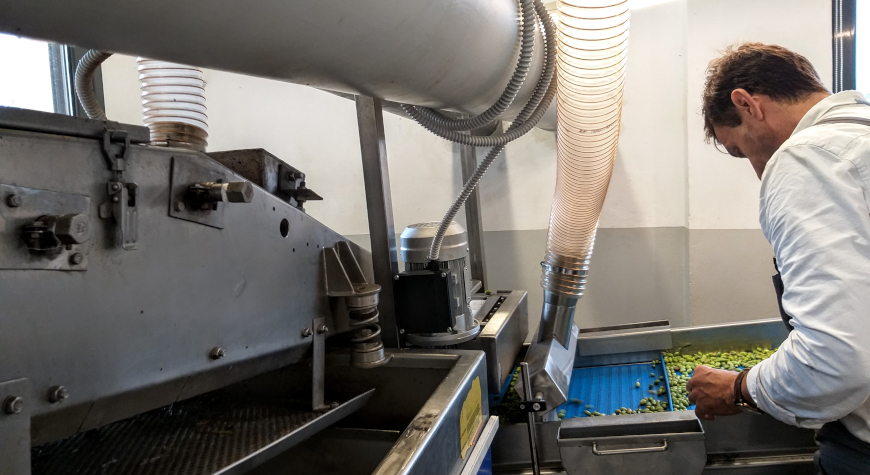
For more information about the upcoming LIVINGAGRO B2B event on innovations in the olive and livestock sectors, email This email address is being protected from spambots. You need JavaScript enabled to view it..
All businesses, organizations, and competitions involved with Greek olive oil, the Mediterranean diet, and/or agrotourism or food tourism in Greece, as well as others interested in supporting Greeks working in these sectors, are invited to consider the advertising and sponsorship opportunities on the Greek Liquid Gold: Authentic Extra Virgin Olive Oil website. The only wide-ranging English-language site focused on news and information from the Greek olive oil world, it has helped companies reach consumers in more than 215 countries around the globe.


